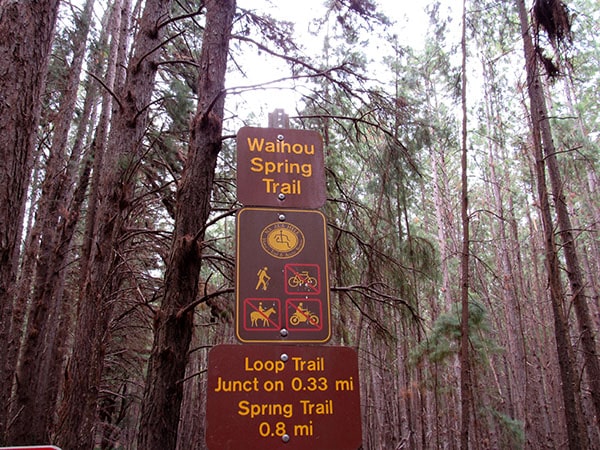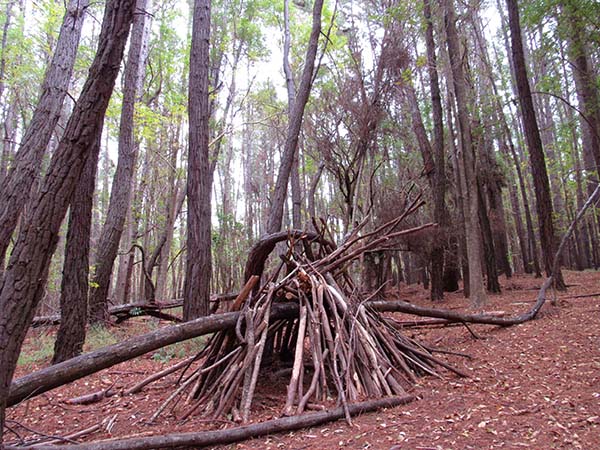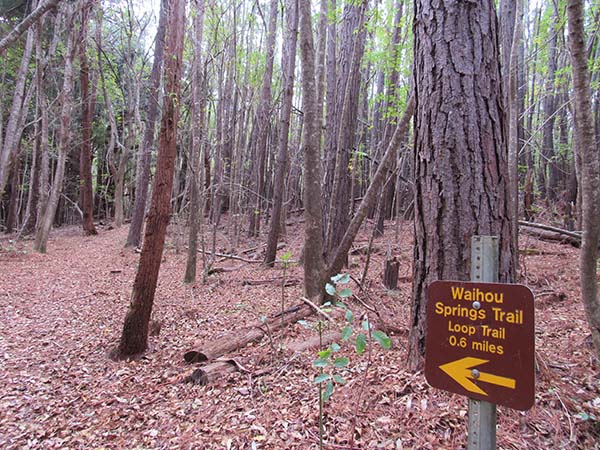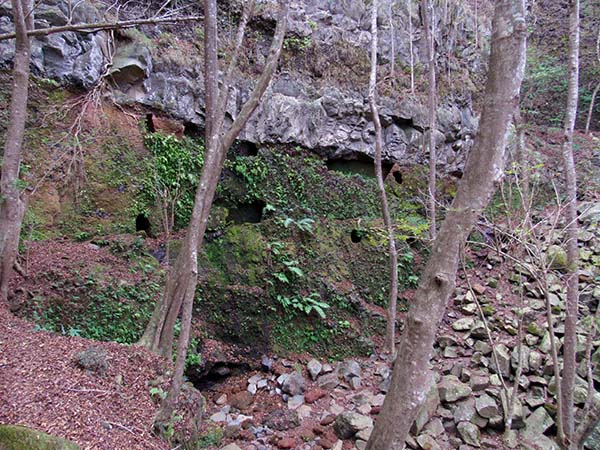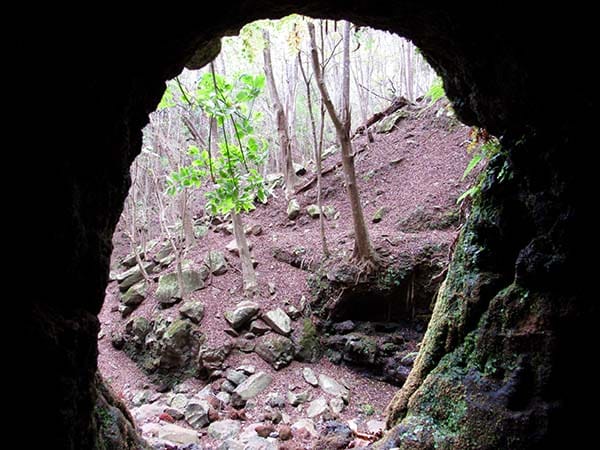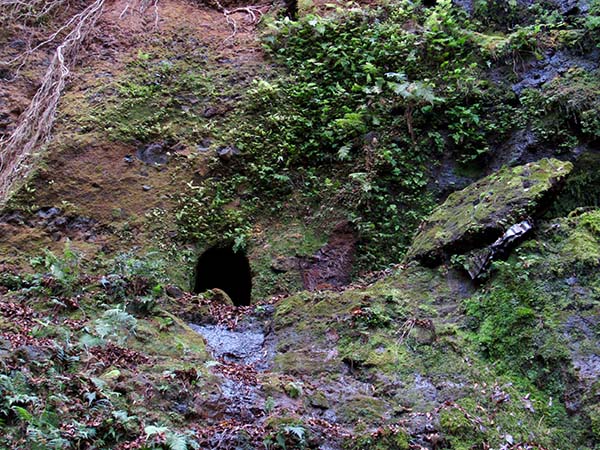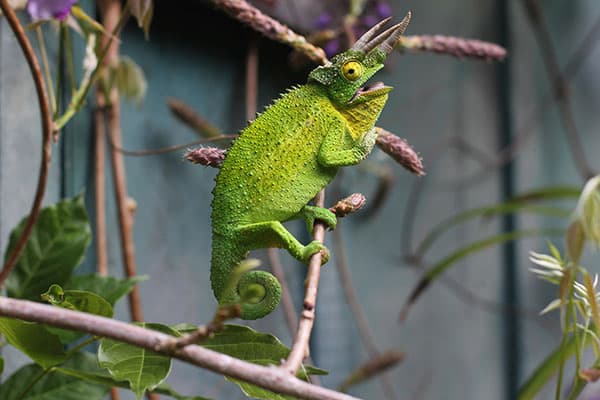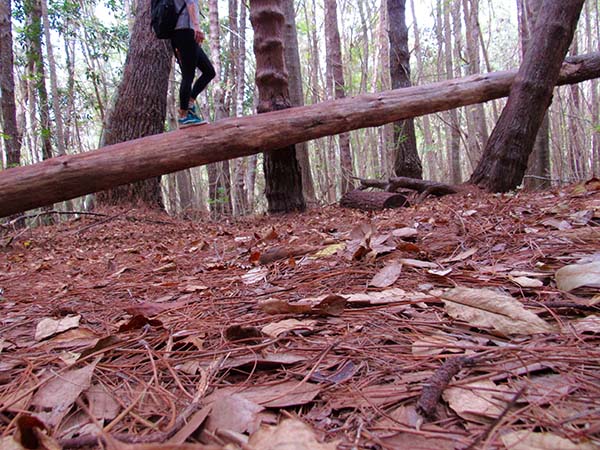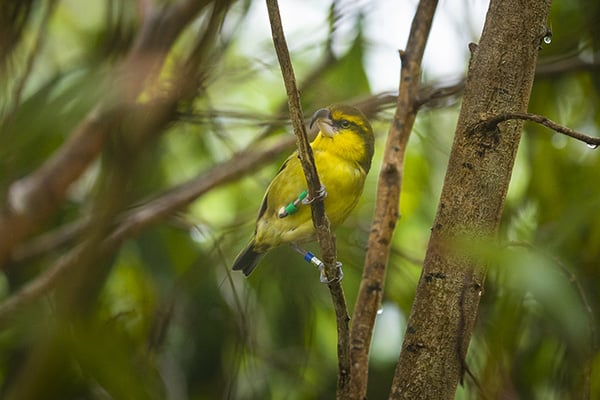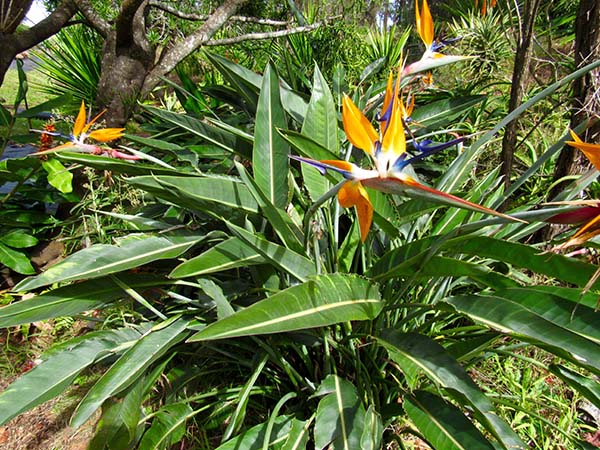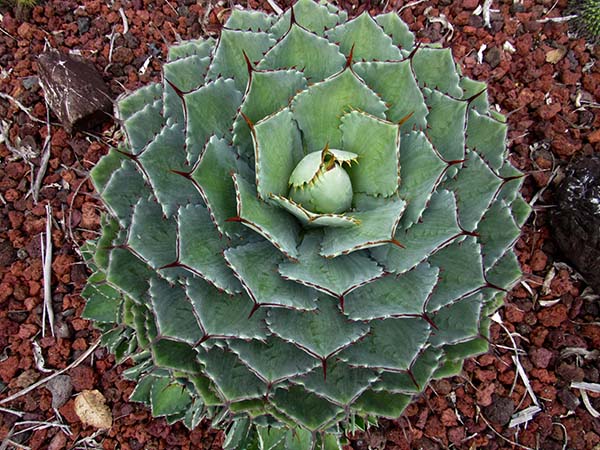Hiking On Maui
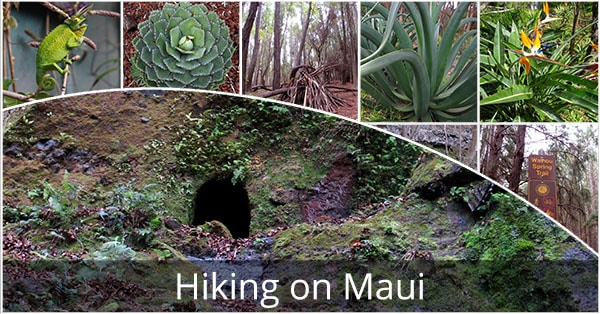
The Aloha State offers a variety of micro climates within each of the islands. Within a day, you can snorkel crystal blue waters, lounge on a white sand beach, explore a lush jungle, discover the hot and barren expanse of a lava field and watch the sunset bundled in a winter jacket atop a dormant volcano. After soaking up the much-needed vitamin D and achieving an envy-worthy tan, hiking on Maui can be experienced at a higher altitude.
Heading directly up the side of Haleakala from the town of Makawao, the county road narrows and the air becomes cooler. Enormous eucalyptus trees spread their roots beneath the pavement, creating natural speed bumps on the inclined twists and turns of Olinda Road.
About 15 minutes up the road, a small parking area sits on the right side, providing access to the Waihou Spring Forest Reserve, a premier destination for Maui hiking. This area, historically used for grazing animals, was established in 1909 by the Governor to safeguard the sources of Waihou Spring, one of the few perennial springs on the west slope of Haleakalā. A successful experimental pine forest was planted and continues to thrive in the cool mountain air.
The well-marked trail presents two distinct routes for exploration. One option is a short loop trail leading through a variety of trees such as pine, cypress, eucalyptus, ash, redwood and koa. The other route leads down a steep ravine to the springs. If you’re feeling adventurous, the extra effort to follow the switchback trail to the forest valley’s bottom is rewarded. Make sure to wear suitable footwear whenever hiking on Maui and carry water, especially if you decide to head down into the canyon.
Meandering back and forth on the pine needle and eucalyptus leaf-strewn path, your destination is a dried up river bed where a waterfall once cascaded from an expansive moss-covered rock wall above. Perfectly formed doorways are scattered across the lower levels of the cliff side. For those who prefer the mystery, the origin of these tunnels will be left for discussion upon arrival, so stop reading now if you wish to preserve the intrigue. It’s fun to imagine these tunnels as hideouts for dwarfs or ‘menehune’ (a mythological dwarf people in Hawaiian tradition believed to live in the deep forests and hidden valleys of the Hawaiian Islands), leading to unknown destinations. The sounds of water trickling, native birds chirping, and tree tops swaying in the breeze add an enchanting feel to the forest setting.
The openings in the rock wall were in fact cut as water diversion tunnels. Entering some of the caves is relatively straightforward; you can crouch and navigate through to a window in the cliff side. When hiking on Maui, use common sense, especially when walking on loose rocks and slippery tunnel entrances.
The entire hike down into the canyon, back up and around the loop trail typically takes no more than 1.5 hours, offering an exceptional place for some forest bathing. Keep an eye out for the distinctive green horned and bulging eyed Jackson’s Chameleon leisurely creeping along the trail or perched in the trees. This nonnative reptile was brought to Hawaii as a pet, a few escaped and the species flourished in cooler elevations like Olinda.
A dedicated group of conservationists is actively working to protect the native birds and restore natural habitats in this area. The Maui Forest Bird Recovery Project is committed to developing and implementing techniques that recover Maui’s endangered birds and to restore their habitats through extensive research, development, and application of conservation techniques. Among the birds under their protection are the native sub species of Hawaiian Honeycreepers. If you’re a bird enthusiast, make sure to check out their website before venturing into the forest to identify these rare and culturally significant creatures while hiking on Maui. While their office is not open to the public, they depend on donations and offer opportunities to adopt a bird, plant a tree, or attend a fundraiser event.
On the return drive, consider stopping at Rainbow Acres, a succulent and cactus nursery that is truly worth a visit. Thriving in the cool mountain air of Olinda, the term ‘succulent’ refers to the plant’s ability to retain water. Some of the plants here have been growing for 30-40 years, creating a stunning display of botanical beauty. The nursery is open to the public on Tuesdays and Thursdays from 9:00 am to 4:00 pm, as well as Saturdays from 10:00 am to 3:00 pm.
The Olinda upcountry is unique, refreshing and an ideal place for hiking on Maui. If you’re looking for guided hiking experiences on Maui, check out this link.






